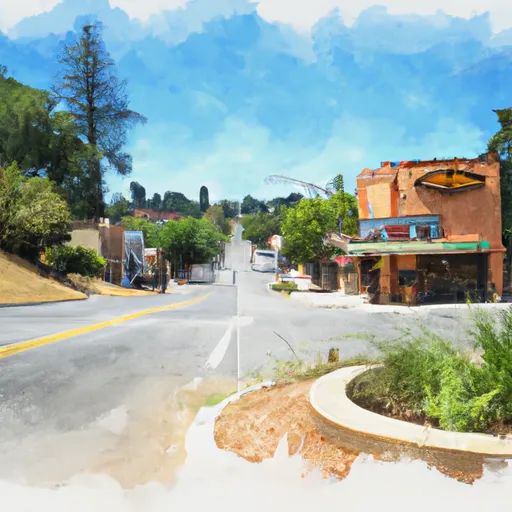-
 Snoflo Premium
Snoflo Premium
Get unlimited access to all our content
With no Ad interruptions! - Start Your Free Trial Login with existing account
Aromas
Eden Index
Climate
9.6
•
Recreation
5.7
•
Community
1.4
•
Safeguard
6.2/10

Aromas, California is a small town located in Monterey County, about 10 miles east of the Pacific Ocean. The climate is typically Mediterranean, with mild, wet winters and hot, dry summers. The town is surrounded by the Aromas Hills, which are primarily composed of sedimentary rock and shale. The nearby Pajaro River provides a significant source of hydrology, and the area is also home to several small creeks and tributaries. Outdoor recreation opportunities in Aromas include hiking and mountain biking in the hills, fishing in the river, and exploring nearby state parks like Pinnacles and Henry W. Coe.
What is the Eden Index?
The Snoflo Eden Index serves as a comprehensive rating system for regions, evaluating their desirability through a holistic assessment of climate health, outdoor recreation opportunities, and natural disaster risk, acknowledging the profound impact of these factors on livability and well-being.
Climate Health Indicator (CHI): 9.6
Aromas receives approximately
533mm of rain per year,
with humidity levels near 62%
and air temperatures averaging around
15°C.
Aromas has a plant hardyness factor of
9, meaning
plants and agriculture in this region tend to thrive here all year round.
By considering the ideal temperature range, reliable water supplies, clean air, and stable seasonal rain or snowpacks, the Climate Health Indicator (CHI) underscores the significance of a healthy climate as the foundation for quality living.
A healthy climate is paramount for ensuring a high quality of life and livability in a region, fostering both physical well-being and environmental harmony. This can be characterized by ideal temperatures, reliable access to water supplies, clean air, and consistent seasonal rain or snowpacks.
Weather Forecast
Streamflow Conditions
Central California Coastal
Area Rivers
Central California Coastal
Snowpack Depths
Central California Coastal
Reservoir Storage Capacity
Central California Coastal
Groundwater Levels
Recreational Opportunity Index (ROI): 5.7
The Recreational Opportunity Index (ROI) recognizes the value of outdoor recreational options, such as parks, hiking trails, camping sites, and fishing spots, while acknowledging that climate plays a pivotal role in ensuring the comfort and consistency of these experiences.
Access to outdoor recreational opportunities, encompassing activities such as parks, hiking, camping, and fishing, is crucial for overall well-being, and the climate plays a pivotal role in enabling and enhancing these experiences, ensuring that individuals can engage in nature-based activities comfortably and consistently.
Camping Areas
| Campground | Campsites | Reservations | Toilets | Showers | Elevation |
|---|---|---|---|---|---|
| Mount Madonna | 111 | 1,583 ft | |||
| Laguna Seca | 172 | 762 ft | |||
| Fremont Peak State Park | 21 | 2,768 ft | |||
| Henry Coe State Park | 20 | 2,715 ft | |||
| Uvas Canyon County Park | 25 | 1,098 ft | |||
| Sunset State Beach | 90 | 93 ft | |||
| Coyote Lake County Park | 74 | 796 ft | |||
| Pinto Lake Park | 28 | 119 ft |
Catastrophe Safeguard Index (CSI):
The Catastrophe Safeguard Index (CSI) recognizes that natural disaster risk, encompassing floods, fires, hurricanes, and tornadoes, can drastically affect safety and the overall appeal of an area.
The level of natural disaster risk in a region significantly affects safety and the overall livability, with climate change amplifying these risks by potentially increasing the frequency and intensity of events like floods, fires, hurricanes, and tornadoes, thereby posing substantial challenges to community resilience and well-being.
Community Resilience Indicator (CRI): 1.4
The Community Resilience Indicator (CRI) recognizes that education, healthcare, and socioeconomics are crucial to the well-being of a region. The CRI acknowledges the profound impact of these elements on residents' overall quality of life. By evaluating educational resources, healthcare accessibility, and economic inclusivity, the index captures the essential aspects that contribute to a thriving community, fostering resident satisfaction, equity, and social cohesion.

